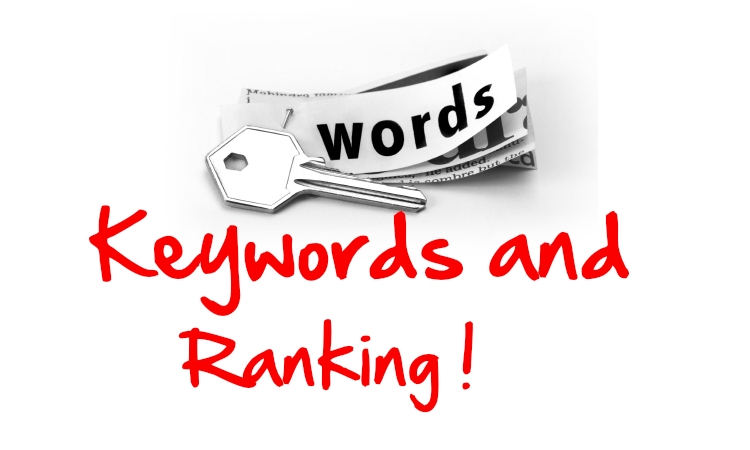Are you looking for a step-by-step SEO guide? We offer you a free tutorial with the most important SEO techniques so that your website appears as high as possible in the Google search results. Our SEO guide provides you with important know-how and best practices for a successful online business. If you need further support in addition to this guide, we are at your side with comprehensive services relating to SEO, online marketing, and email marketing!

What is SEO and what do you need it for?
What is SEO and what do you need it for? The search engine optimization (SEO) is a way your website to a relevant topic to place high up in the search results. The basics are a whole series of technical and content-related measures that are specified by the way the search engines work. The most important points include usability, short loading times, relevant, easily readable, and information-rich texts, images, and videos (content) as well as the use of relevant key terms (keywords) on your website. You can find out what to look out for in our instructions. If you have any questions about our SEO tutorial, we will be happy to help you with our know-how.
Instructions for modern search engine optimization
SEO measures basically work because Google and other search engines regularly visit your site and rate it. This results in the search result placement of website. This is done automatically by so-called bots and with the help of algorithms and artificial intelligence.
The algorithms behind Google search have developed extensively in recent years. It used to be possible to use relatively simple tricks to get a good placement in Google search results on a particular topic. Today, search engine optimization for a website is more user oriented. Today it is important to understand the intentions of the user and to deliver appropriate, high-quality content and products. We will go into this in detail in our SEO tutorial and give you instructions for optimization.

SEO Tutorial: How beginners can optimize their website for search engines AND users
If a user searches for one or more terms, Google and other search engines automatically check how well your website fits and assign it a place in the search result accordingly. Since around almost 98 % of Google users find what they are looking for on the first page, search engine optimization is both necessary and demanding. With our guide to search engine optimization, you can optimize your website and rank well on your relevant topic. Because it is not rocket science to develop a good SEO strategy and land before other websites in Google search results.
In these free step-by-step instructions, you will learn important basics, tricks, and tips that you can put into practice. In addition to this SEO tutorial, we as the Hanover SEO Agency offer you a whole range of services relating to online marketing.
What are OffPage SEO and OnPage SEO?
One possible division of search engine optimization is the distinction between OnPage Optimization and Offpage Optimization. OnPage optimization takes place directly on the website. Offpage optimization means all measures that include other websites and social networks. In our step-by-step instructions, we explain how you can optimize your website on and off-page.
OnPage optimization is about making your site easy to find and user-friendly. Both factors are related, because Google and other search engines use a whole range of key figures to infer the quality of the website from user behaviour. This includes, for example, the length of time they spend on your website and the way in which users move through your navigation.
Important information about OnPage optimization in our SEO guide
An essential part of SEO techniques for offpage optimization aims to accommodate so-called backlinks, i.e., links to your website on other websites. Google rates the quality of links and penalizes websites that distribute their links sparingly on the Internet. Above all, you should avoid link networks and dubious link exchange offers. You can find out how to choose a good link text and the right attributes in step 5 of our step-by-step instructions.
Step 1: SEO Guide to Technical SEO
Step 1: SEO Guide to Technical SEOTechnical search engine optimization begins with choosing the domain for your site. The page URL should contain your main keyword whenever possible. A company name as a page URL does not provide Google with any information and therefore does not lead to a good ranking in the search results pages, the SERPs.
SEO tutorial for navigation and links
Navigation and links are just as important for search engine optimization. The navigation should therefore be clear and user-friendly. The links to the individual sub-items ideally contain the most important keywords on your topic. If you use a content management system like WordPress, you can use a WordPress SEO plugin like Yoast SEO to optimize your links as part of OnPage optimization. Instructions for this tool can be found on the Yoast SEO website.
Another important technical aspect is the loading speeds. Pay attention to the file sizes of your content, always keep your system up to date and use the leanest possible programming structure. The WordPress content management system is SEO-friendly and makes it easier for you to optimize your website.
Many websites are accessed via mobile devices such as tablets or smartphones. The keyword here is mobile first. Not only the loading speed is important here, but also the so-called responsive web design. This standard ensures that your website adapts to the respective screen size. If you have a new website designed, you should not do without this form of optimization.
Instructions for structured data
Another aspect of technical search engine optimization that we introduce in our SEO tutorial is structured data. They give Google and other search engines information about what type of information certain parts of the content are. Imagine a fictional company called Orange GmbH. If you identify the name as a company name using the structured data, Google knows that orange does not mean the fruit or the colour. Structured data enables you to markup addresses, telephone numbers, EAN codes and much more. The major search engine providers have agreed on a uniform standard for the award, which you can find on the schema.org portal.
Structured data also form the basis for so-called rich snippets. This means the previews on Google that contain information such as opening times, telephone number and the like.
Step 2: SEO instructions for SEO-optimized texts
SEO-optimized texts contribute significantly to good placement in search results. One of the reasons for this is that algorithms can process texts better than images, videos and other content.
Before you write or have texts written, you should answer two essential questions:
- What are relevant keywords?
- With what intention does the user come to the respective (sub) page?
1. SEO tutorial: find relevant keywords

For this SEO tutorial, let’s assume as an example that you are in the e-commerce business and run an online shop for auto parts that you want to optimize. What is still relatively simple in this example becomes challenging in other industries and with a large article base. In the case of small projects, the content of the competitors and the auto-completion from Google offer initial starting points for research. For larger projects, you should use an optimization tool. This also makes it easier for you to identify best practices.
You do not have to take all of these words one-to-one. Google recognizes grammatical inflections, different spellings, and synonyms very well. Nevertheless, you should include the keywords for optimization in your texts. However, the terms alone do not lead to success.
With a text that is about motorcycles, but still contains the sample keywords mentioned above, your website will not achieve a good position in the search results. The reason for this is the so-called semantic networks of the texts. Based on the text structure and the words used, the search engines recognize whether the entire text or just the keywords match the search query.
Which are the most important terms varies depending on the sub-page. In our fictional example, car accessories for the home page could be especially important. When you set up a bottom for snow chains, terms such as snow chains for golf, cheap snow chains or snow chains with quick release fasteners come to the fore.
SEO beginner’s guide to keyword research
The keyword research you can as a beginner and perform intuitive for small projects. With common sense and a little feel for the search engines, you will achieve good results in search engine optimization. For larger projects, for example in the e-commerce sector, you usually cannot avoid using a software tool. As the SEO Agency Bangalore, we can research keywords for you that serve as the basis for semantically appropriate texts.
There is no concrete value for how often you should use the keywords in a text. If you overdo it, Google will rate your website as spam and downgrade it. Your text should be easy to read and look natural. Ideally, you should distribute the keywords and / or their synonyms evenly in the text, in the headings and in the meta description. The ideal text length also depends a lot on the type of text and your competitors. In our fictitious example, you could write a start page text with around 300 words in which around 2 percent of the terms are your main keyword or a synonym. For a blog post about snow chains, you could easily write 700 or 1200 words.
2. The user intention
The next step in this guide explains why the intent of the users of your site is important.
The user intention determines how you should structure the content on a particular topic. For this SEO tutorial, let us assume you are creating a landing page about buying snow chains. Then you could go into the advantages and disadvantages of individual models on the page and offer sales advice. Users who search for the keyword mentioned usually have a specific purchase intention. If you inform them about specific models, the probability of a purchase increases.
In e-commerce, users are mostly in the information, decision-making or purchasing phase. Before creating content on a topic, think about the phase for which you want to optimize your texts and with which questions, emotions, prior knowledge, and feelings the user ends up on your page (or subpage). Get it with your content where it is and lead it to where you want it to be. It is important to consider user intention so that users not only land on your page, but also take the desired action.
Important: Under no circumstances may you copy texts or parts of them. Google recognizes this duplicate content and punishes you immediately.
You can determine important key figures such as the click-through rate ( CTR ) of your site with the Google Analytics tool. The Google Analytics tool is so extensive that we will not go into detail in this step-by-step guide for SEO.
Step 3: SEO instructions for your images
Google and other search engines are increasingly learning to recognize the content of images. For example, you can see what the name of the image file is, what is in the caption and in which folder the image file is stored. The alt text is also important. This is a kind of image description that can be read by browsers and, for example, helps blind people. Search engines also use this information.
For SEO it makes sense to describe the image in a few words in the file’s alt text and to include keywords in a dosed manner. An example: VW Golf five with snow chains. The same applies to the name of the picture. You should also name the folder in which you save the images on the website so that your images are as high up as possible in the search results.
Search engines like short loading times. This also applies to pictures. Therefore, they should not be too big. 150 kB is ideal. If you want to present larger images, you can first display them as a preview (thumbnail) and then link to a larger version. With this you use another SEO option. Because if you use an image file several times on your site, the Google search and other search engines will probably rate it as popular, which can give you an advantage in the image search.
How you insert the alt text for images depends on your content management system. WordPress is SEO-friendly, and you can therefore insert the alt text directly into the media library. The WordPress SEO plugin Yoast SEO offers you further options for search engine optimization. It is a useful tool for OnPage optimization.
4th step: SEO instructions for the metadata
The meta description is especially important for SEO. That is why we dedicate a separate section to it in our step-by-step instructions. The meta description includes Title and Description. The title is the blue heading in the Google search results, the description is the text below. You can store both details for each subpage of your website. For WordPress SEO this works with an SEO plugin like the Yoast SEO Tool. If you do not create the information yourself, Google will compile it from the content of your site, which is often not an advantage. The metadata is the first thing a user sees of your website and gives you the opportunity to encourage them to visit using the Google search results.
The title should contain the most important keyword of the respective page. A useful addition can be an initial call-to-action, your company name or other information. An example: buy cheap snow chains online in the shop of …!
It is important that your meta description does not contain more than 155 characters and that it arouses interest in the readers to click and read your post on the web.
In the description, you should convince the user of your website at first glance and with just a few words. He must already see in the search result that he will find exactly what he is looking for with you. In addition to words, you can also use characters and symbols such as crosses, ticks, or stars.
What applies to search engine optimization in general applies to the metadata: no spamming. Avoid putting the keyword in too often or just filling the title with keywords.
5th step: SEO instructions for external and internal linking.
Internal linking on your website and links that refer to your site from other websites are an important factor in search engine optimization. Here, too, you should primarily think of the users and link in such a way that the links offer added value.
An internal link refers to a reference from one subpage to another subpage. For example, you can link to individual articles in a category description. From individual articles you can in turn link to alternatives or to advice pages. But do not overdo it and only use the links in a dosed manner as part of your SEO strategy.
However, to optimize your website for Google and other search engines, you should not buy links in bulk. This quickly leads to penalties by the search engines. It is therefore better to have links that are as natural as possible. For example, you can write informative blog articles for other websites and include a link in them. Posts in social networks are also an option for linking.
For the sake of clarity, let’s stick with the example from our guide and assume you’ve written a blog article about snow chains for another website. Your link could then look like this: “You can find out more about specific models in the example company’s snow chain buying guide!” This is how the search engines know what the link is about. For example, if you were to write “You can find out more here!”, The search engines would not be able to do much with it.
SEO for linking choosing the right attributes.
You, too, should only link to reputable sites. If want to mention a link but do not want to use it for SEO because the page is a negative example of something, you can mark the link with the so-called no-follow attribute. This is a simple HTML code in the source text that tells the search engines not to pay attention to this link.
With the Google Analytics tool you can find out which websites are linking to your page. If you discover a link that may harm you, you have two options. On the one hand, you can ask the webmaster to remove the link. On the other hand, you can validate the link with the Google Tag Manager tool.
SEO Guide – Checklist
In our checklist we summarize the most important aspects from our tutorial.
- Keywords researched.
- Analyse competitors and best practices.
- Page URL contains keyword.
- Website created in responsive design.
- set up and activated the Google Analytics tool
- Links to sub-pages contain keywords.
- Structured data excellent
- Loading times checked and optimized.
- Clarified user intention for the content of the respective sub-pages.
- Texts are easy to read, structured, error-free, and clear.
- Headings are correctly marked.
- Image size checked and possibly reduced for fast loading times.
- Inserted alt text for images and graphics
- Meta title and description created for each page and optimized for Google search (max. 155 characters)
- Internal links created with appropriate link texts.
- Links to other websites may be marked with the no-follow attribute.
- External links exist in the form of blog articles or posts in social networks.
- For WordPress SEO: the tool Yoast SEO or another SEO plugin installed.
This SEO guide has given you important know-how and represents a guide for optimization for search engine optimization. Do you have any questions about SEO techniques, Yoast SEO or another topic from this tutorial? Our SEO agency offers numerous services related to SEO, e-commerce, and email marketing. Let us advise you without obligation!
About the Author
Kate Westall is a professional blogger, who enjoys writing on all general and professional topics like Home Improvement, Fashion and Local Seo etc.


